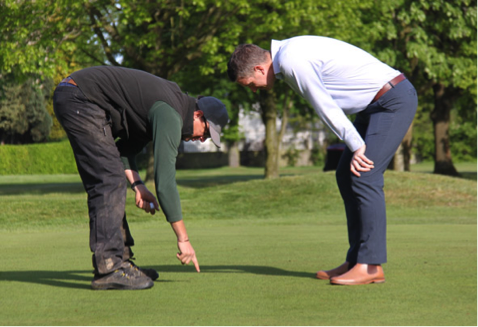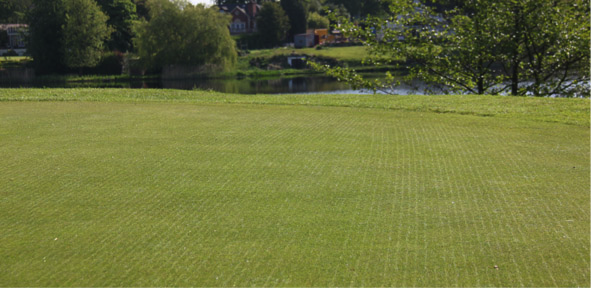Modern creeping bentgrasses offer complementary traits for modern greens
Related Articles
UK greenkeepers have traditionally been skeptical of using creeping bentgrasses on their greens, believing that they are either too coarse to produce an even, fast-rolling putting surface, or that they require excessive maintenance and too many inputs. But, with an increasing number of greenkeepers equally wary of becoming over-reliant on a monoculture of cultivars, creeping bentgrasses are gaining in popularity, with a rising number of clubs appreciating the benefits that modern cultivars with a wide genetic base can bring.
Paul Moreton, technical sales representative from Germinal Amenity, explains why the latest generation of creeping varieties are becoming more popular, particularly on golf courses where wet but mild conditions require the use of a combination of grass species which can offer complementary traits including disease, stress, drought and low cutting height tolerance.

“New varieties such as 007 DSB creeping bent offer these qualities in abundance and will complement the mix of grass species already present on most golf greens,” Paul explains. “They can therefore help greenkeepers to mitigate the perennial problem of uneven growth caused by the presence of a variety of species, each of which will have its own rate of growth and vigour.”
007 DSB is available from Germinal in ForeFront Greens: a three-way mixture consisting of 30% 007 DSB creeping bent and two top-performing browntop bentgrasses, Aber®Regal (35%) and Aber®Royal (35%).
“Over-seeding with a selection of compatible cultivars, such as those in ForeFront Greens, will introduce several advantageous varieties which can out-compete poa and other less desirable species,” Paul adds. “This, in turn, enables greenkeepers to create a sward with an even growth habit and which can better withstand weather-induced stresses and disease pressures.”
Over-seeding with 007 DSB creeping bent gives the added advantage that any lightly scarred or damaged areas can potentially be self-repaired by new growth.
“Creeping bentgrasses are unique in that sense,” Paul continues. “They possess an adaptive growth habit which means they will quickly habituate in order to survive and thrive. That means, unlike other species which only grow vertically or in tufts, creeping bents will grow laterally, enabling them to spread and infill damaged areas whilst adapting to cut heights of around 3mm.
“Unlike meadowgrasses and other species which try to grow through the winter resulting in coarse, weak and disease prone swards, modern creeping bents will lie dormant and therefore remain less susceptible to disease. That, said, 007 does germinate in coldish conditions and in trials held in the North West, actually germinated on a par with what are perceived to be quicker-establishing ryegrass species.
“Vigorous cultivars such as 007 DSB, which was specifically bred for UK conditions from 24 parent plants, also work hard to put extensive roots down prior to allocating excessive energy to leaf blade production. That makes them better equipped to cope with a wider range of conditions and stress factors and makes them easier to manage.”

Gwynn Davies, course manager at The Mere Golf Resort in Cheshire, agrees with Paul’s sentiments having recently started using 007 DSB on his greens: “Over the past couple of years we’ve been over-seeding with Germinal’s Aber®Royal and Aber®Regal browntop bentgrasses to improve the consistency, fineness of leaf and vitality of our greens. This year we’ve switched to Germinal’s ForeFront Greens mixture to raise standards and enable the sward to automatically repair any small areas of damage or scarring.
“Despite less than ideal conditions which saw variable spring weather give soil temperatures between 11.7oC and 18.6oC during the first two weeks of May, the first signs of seedling emergence were apparent eight days after we over-seeded. Clear lines of new growth were visible a few days later showing that the seed had germinated well and produced healthy new plant populations,” he adds.
“Adding the creeping bent will take some of the worry out of managing the greens as its lateral growth habit and ability to repair scars or infill around plugs means quicker recovery. It has also enabled us to lay down the foundations to counter the potential loss of a number of key fungicide active ingredients. The expectation is that by modifying the composition of our greens now, we’ll still be able to present good quality greens if and when those fungicides become unavailable.”

























